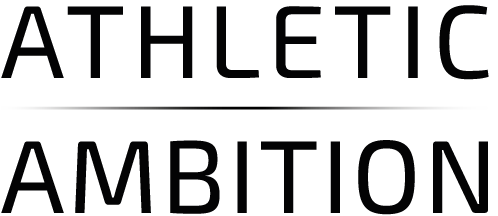Over the coming weeks, I will be posting a series of articles on the processes I have picked up, learned and implemented in helping develop a youth athlete (6-8 years old) to late adolescent (15-17). I will cover 4 phases that will involve different skill sets, which should be developed, in order to become a more able athlete.
The four phases of athlete development that I have picked up and implement:
- Phase 1: General coordination and movement skills
- Phase 2: Body weight strength, strength technique and impact of speed
- Phase 3: Technical movement, strategic and sport specific skills
- Phase 4: Body composition and power and speed maximisation
To read the first article in the series, phase 1, click here.
Phase 2: Bodyweight strength and strength technique and impact of speed
- Second phase of the athletic development model
- Girls from age 8 and boys from age 9 can start moving onto this phase
- This will last until age 11 for girls and age 12 for boys
- Focus on technique over weight
- Continue to develop movement and coordination from Phase 1
- Introduce nutrition, recovery, hydration, knowledge of warm up and cool down drills
As we progress from the coordination and movement phase, the requirement to cover ground more quickly becomes much more important. Phase 2 is where an increased need for improved strength will be brought in. Strength is the foundation for other areas of athleticism, such as speed, power etc to built on. By introducing developing athletes to specific strength based activities, such as squats, we can start to improve the athletes’ rate of force development. A higher rate of force development is generally linked to faster sprint speeds and greater jumping heights/distance.
Another way of increasing speed could be through weight management. In the case of the developing athlete, this could be down to poor and unhealthy nutritional habits in most cases. We can start introducing the importance of a healthy, well rounded way of eating to help improve the athletes performance during training and matches and also in the athletes recovery from these sessions. An increase in weight could also be down to a position the athlete plays on the field in his/her sport or a position that doesn’t require as much movement. For others, it might not be staying active out of their chosen sport, which goes back to playing 4-6 sports a year.
At this stage the athlete could focus on 4 sports a year, 2 summer and 2 winter and then focus on bodyweight strength movements and once these have been perfected, adding in light to no weight (pole) strength exercises e.g. deadlift, squat variations, Romanian deadlift, overhead press, clean, snatch etc.
When starting out with youth athletes, especially in a group setting, I usually start with 3 exercises. Bodyweight squat with arms out in front, proper hip flexion and prone plank hold. I find that adding to many exercises in the beginning can confuse and frustrate the athlete and I would rather them focus their attention on fewer exercises and get these exercises performed correctly. The reason I choose the three mentioned, is the:
- Squat is one of the best ways of developing overall levels of strength and I believe is fundamental in many strength training and performance training programs.
- Hip flexion teaches the athlete how to properly lean forward, using the hamstring and gluteus muscles, keeping the mid section braced and stable, rather than using the lower back
- Prone plank as it is, is a way of engaging the anterior core as well as the gluteus muscles and teaching how to stabilize the mid section.
I will then build on that to doing prisoner squats, single leg squats, press ups, pull ups, inverted rows, side planks etc. Once the athlete is proficient, I would then incorporate some external loading like dumbbells, medicine balls and light Olympic technique bars.
This development of the key strength movements, even by just using bodyweight and some light external weight, will have a dramatic increase in the athletes’ speed, strength and power. This will also keep the athlete mobile, flexible and maintain/improve posture and help in the prevention of injury.
This would also help the athlete carry over to the next phase, which includes the following:
Phase 3: Technical movement, strategic and sport specific skills
- 3rd phase of youth athlete development
- Girls from age 11 and boys from age 12 can start moving onto this phase
- This will last until age 15 for girls and age 16 for boys
- Focus on technique over weight in weights room
- Start refining sport specific skills
- Start embracing game and sporting strategies
- Start touching on advanced speed development
In conclusion, Phase 2 is very important in athletic development as we can start to develop base levels of strength. We also start to learn how to do the movements correctly, if taught by a knowledgeable coach and learn how to stabilize the body within those movements. The athlete will also start to learn about healthy eating and how it can help their performance, training and recovery.
If you would like more information on youth athlete development, please contact harry@athletic-ambition.com
Harry Grove BSc CSCS
Harry is a strength and conditioning coach and personal trainer. He has been in the health and fitness industry since 2000 and has trained 1000’s of clients, ranging from your everyday gym goers to professional athletes. Harry has competed as an international level powerlifter.


Recent Comments